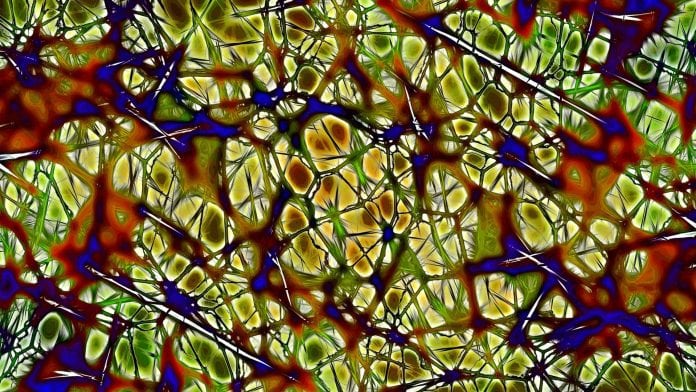
Researchers have identified a molecule with the capabilities of halting and reversing neurodegeneration typically caused by Parkinson’s disease.
A scientific collaboration led by researchers at the Institute of Biotechnology and Biomedicine (IBB) of the Universitat Autònoma de Barcelona, Spain, has identified a molecule which halts and reverses neurodegeneration.
Interrupting the development of Parkinson’s
After analysing over 14,000 molecules, the researchers came across the SynuClean-D molecule, which inhibits the aggregation of the alpha-synuclein protein and breaks the already formed amyloid fibres, thus preventing the initiation of the process causing the onset of the neurodegenerative Parkinson’s disease.
The small SynuClean-D molecule interrupts the formation of the alpha-synuclein amyloid fibres responsible for the onset of Parkinson’s disease, and reverses the neurodegeneration caused by the disease.
After Alzheimer’s disease, Parkinson’s disease is the second most common incurable neurodegenerative disorder. It is characterised by the accumulation of protein deposits in dopaminergic neurons (in charge of producing dopamine) in the form of amyloid fibres. These aggregates are formed in an incredibly complex manner, mainly by the alpha-synuclein protein, which makes it complicated to identify molecules which could prevent or revert the process and the neurodegeneration associated with it.
One of the most commonly used animal models in neurodegenerative diseases, the small Caenorhabditis elegans worm, was used to conduct the experiment. By administering through food, researchers were able to verify that the molecule was capable of notably reducing alpha-synuclein aggregations, preventing the spread of toxic aggregates and which in turn avoids the degeneration of dopaminergic neurons.
Could this lead to treatment?
“Everything seems to indicate that the molecule we identified, the SynuClean-D, may provide therapeutic applications for the treatment of neurodegenerative diseases such as Parkinson’s in the future,” points out Salvador Ventura, researcher and co-ordinator of the Universitat Autònoma de Barcelona.
In order to identify SynuClean-D, researchers developed a methodology capable of identifying the alpha-synuclein aggregation inhibitors among thousands of molecules. Upon identification, an in vitro biophysical characterisation was conducted of their inhibiting activity and before testing it in animal models of the disease (the C. elegans worm), tests were run to discover their behaviour with human neural cell cultures. These animals express the alpha-synuclein in the muscle or in dopaminergic neurons. The experiments demonstrated that the administration of the identified inhibitor reduced protein aggregation, improving the mobility of the animal and protecting it from neural degeneration.






















